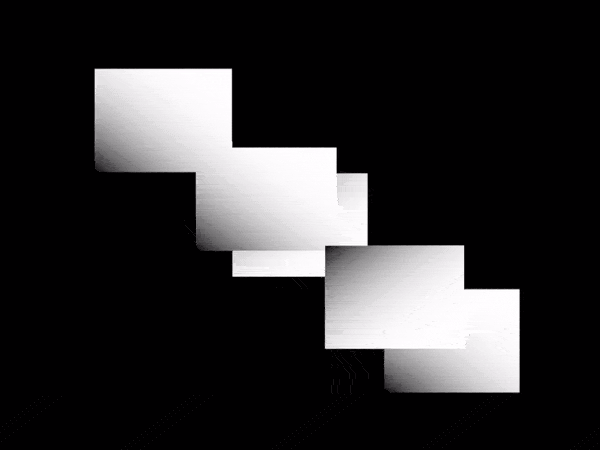Sam Griffith connects Creative Coding with Enviromentalism
In this post I’d like to introduce you to Sam Griffith, a talented graphic designer based in Detroit, to discuss her innovative work at the intersection of design, programming, and traditional craft. Currently pursuing a Master’s degree at the University of Michigan, Sam delves into her latest projects. She shares her insights on blending computational processes with fiber arts, her approach to integrating environmental consciousness into her creative practice, and her future plans.
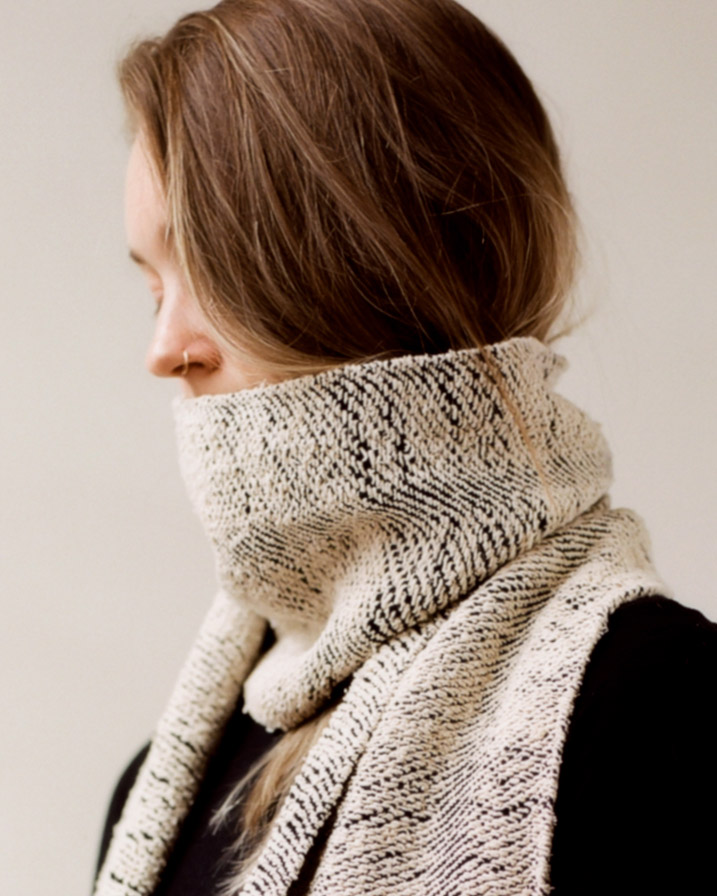
Hi Sam! Thanks for sharing your ideas with us here. First of all: who are you and what do you currently work on?
Hi Tim! You’re so welcome.
I’m a Detroit-based graphic designer who has always been drawn to interactivity, from layouts that shift and adapt to any scale to coded generative graphics. Since last fall I’ve been working on a Master’s degree at the University of Michigan where I have been exploring the connections between computational and fiber-based processes. Currently I’m in the research and gathering phase leading up to my thesis, which will be presented this upcoming spring.
Tell us a bit about your art residency in Barcelona.
I spent three weeks at Casa Raro building a digital tool that maps an image to a weaving on a round hand loom. The project continues my research into translating code into physical mediums, this time in a weaving space.
The process begins in code with an image and a spiral. The spiral grabs colors from the image behind it and stores them in a way that can be unwrapped into a straight line. In physical space, the line is raffia. The program tells me (using the stored color data) where to apply color to the raffia using thread wrapping or other techniques, and then I weave the raffia into a spiral, where the image takes shape again. It’s a process of mapping, unwrapping and re-wrapping.
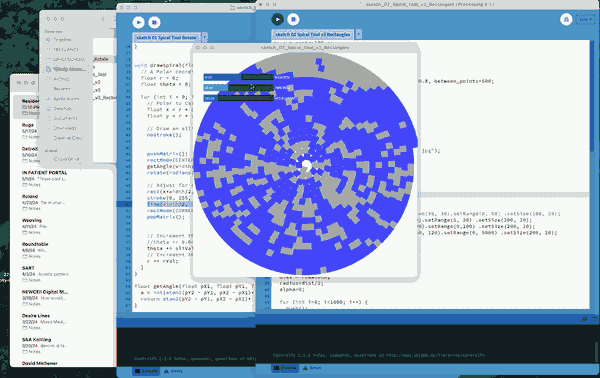
This has been my first time using Processing to make a tool in this way, which has been very exciting and rewarding! I needed an excuse like this residency to try implementing slider controls (ControlP5) in my sketches and I can imagine myself using them in all my projects from here out.
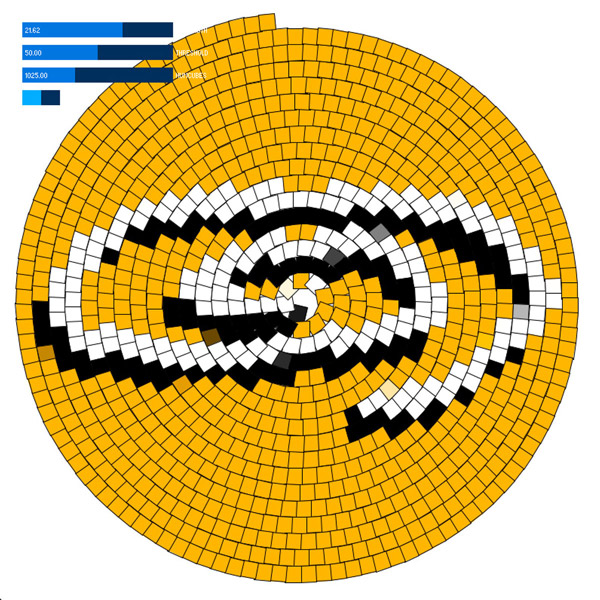
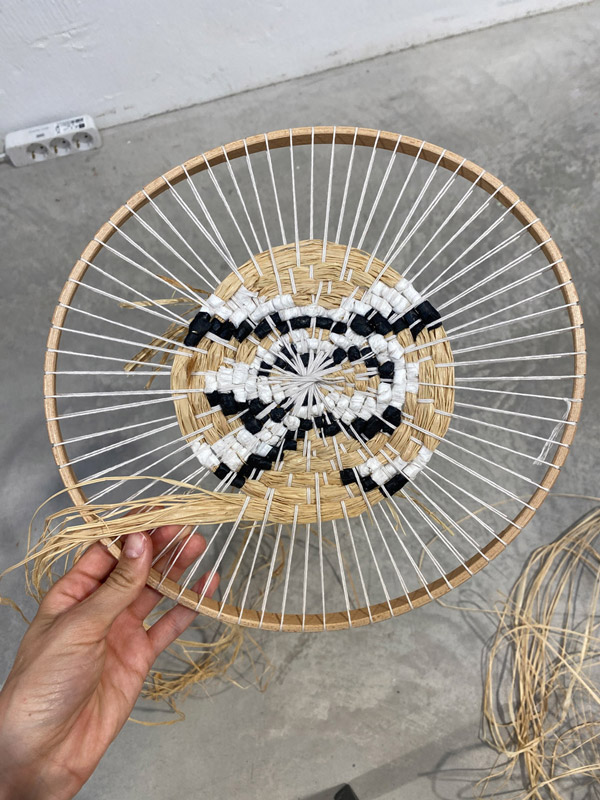
At the very end of the residency I made one of those delightful coding discoveries where you create something you never set out to do, yet it becomes your favorite outcome of the project. This happened when I decided to try plugging video into the tool instead of a static image, which became a really wonderful way to view some of the videos I’d taken of my time in the city. I used this as a projection in the Open Studio at RARO, the final event of the residency, alongside a setup that explained my process. It was a treat to have presented at Creative Coding Barcelona just beforehand, so the entire crew came to view the show!
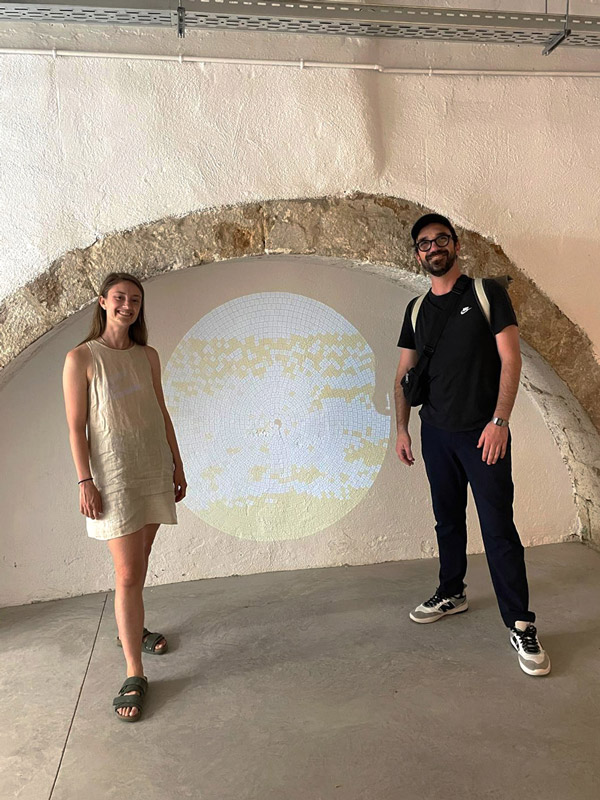
It is very interesting how you bring together programming and craft. Tell us a bit about your approach.
The two practices call to me from different sides of my brain. There’s something so effortless about coding a tool that can be endlessly adjusted to create any number of outputs. As a designer, I love that I can co-create with the program by giving it parameters and receiving usable graphics in return. It automates the creation process, making tedious, repetitive tasks like copy/pasting to make a pattern unnecessary, because that’s what computers are good at.
On the other hand, craft is much more corporeal. The parameters aren’t set by numbers, they’re physical constraints decided by the format (weaving, basketry, beading), the materials (that you might’ve harvested yourself) and your physicality as a human being. In this way, a crafter is co-creating with these elements as well as a (usually long) history of tradition and relationship to place. Craft’s history as a medium is built on the creation of functional items, so whereas code gives you endless outputs, a craft process generally gives you one useful object.
Given that one of the first computers was a Jacquard loom, these two mediums have been related from the start. One way to visualize the connection is to look at a handmade rug or tapestry. From a distance you see patterns creating a cohesive visual whole — get much closer and you’ll start to see individual pieces of yarn, precisely arranged to create the complex patterns you see at a distance. This is the same trick any pixel-based screen is performing: thread by thread, pixel by pixel, an image emerges.
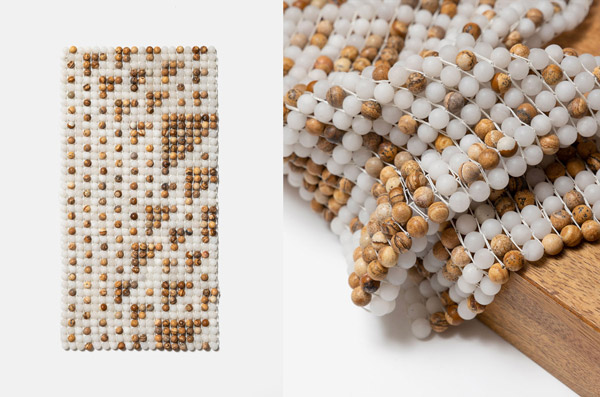
How would you describe the relationship between environmentalism and creative coding?
I see the two fields as being primarily connected by logic, craft and materiality.
At a simplistic level, you can look at coding and the environment as running on certain types of logic. With programming you have if statements, where if a certain condition is met, then something specific happens: If a variable called ‘on’ equals True, then a green circle appears. In the midwest (or the Interior Plateau & Southern Great Lakes Forests ecoregion) where I’m from, if a swath of forest is cleared by loggers or a controlled burn, then the area will be repopulated by pioneer species that thrive in disturbed soil. If (for example) the pioneer species provide enough protection for secondary species to germinate and mature, then the secondary species will eventually crowd out the pioneers and form a more established ecosystem.
Without craft, the primary connection between (creative) code and the environment is the horrific process of extractivism that provides our electric cars and computer batteries with the cobalt and lithium they require to hold a charge. If you expand the relationship to include technology in general, then the relationship only becomes more grim as we see the way artificial intelligence is being used to further marginalize and oppress people across the globe. Not to mention the huge draw that AI services create on our power grids.




However, I do not see technology as inherently extractivist or problematic. As Ursula le Guin said, “technology is the active human interface with the material world.” Crafted items were arguably humankind’s first technologies, providing us tools to process food, start fires, create containers, stay warm and otherwise survive to the modern day. Many crafts, specifically those requiring weaving (including basketry) are created with a sort of repetitive logic. Thinking about the process of twining, creating twine with natural materials, pseudocode to run it might look like this:
for (lengthOfTwine = 0; lengthOfTwine < desiredLength; lengthOfTwine++){
if (enoughMaterial == true){
twistLeft(leftStrand);
twistRight(rightStrand);
crossStrands();
else {
addMaterial();
enoughMaterial = true;
}
With a little familiarity with the craft, the same is possible to imagine for weaving. In this way, I see it as possible to break down weaving techniques into steps that can be designed to create varying outcomes in physical materials. Of course, this is what craft practitioners have been doing across the globe to create patterns and motifs significant to their cultural contexts for millennia. What’s potentially new here, is the introduction of explicitly code-aided or code-based patterns/motifs and what they can say about our current technological era, our relationship to craft, and place.
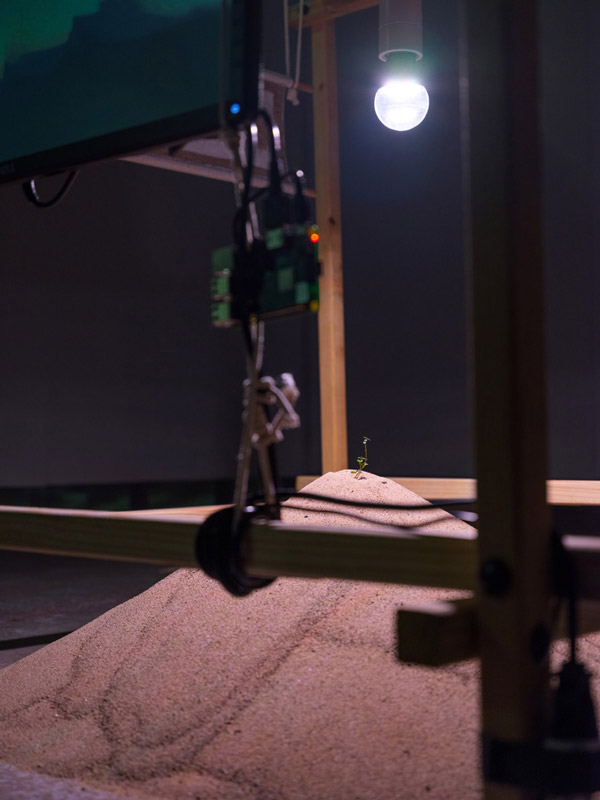
The element that brings the conversation back around to environmentalism here, is material. Given that people have been making baskets since considerably longer than the global trade economy existed, crafts have been created with materials from a range around wherever the creators are located. Reeds and willow branches were woven into baskets, plants were processed into dyes and clays formed into vessels. Arid climates favored construction with mud and clay and humid climates favored locally-sourced wood.
Today, I could drive to an art store and buy any material I want, shipped from overseas, completely separated from its context. Choices are abundant to anyone with the power to order things online, making it possible for someone in Brazil to make the same exact thing as someone in Northern China. Neither is forced to consider the seasonality of what they’ve ordered, when it’s harvested, whether or not it’s abundant, what sort of chemicals were used to force its growth. The only important factor is that it’s in stock. I’d like to ask, what happens if we do stop to consider these things? What if they became parameters for our decision making? What will the regional vernacular of craft look like as people begin to become more environmentally aware of material sourcing? And what can we communicate when local material vernacular is woven into patterns dictated by locally-sourced data?
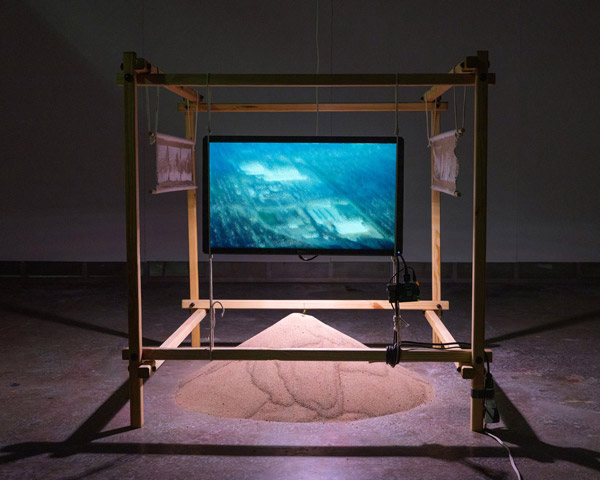
Future plans?
For now I’ll be refining these ideas into a cohesive project for my thesis, which will be shown at the Stamps Gallery in Ann Arbor, Michigan in Spring 2025. Once all that hard work is done I’ll hopefully take a nice break before reuniting with my freelance practice. I’ll be reshaping what was formerly my generalized graphic design practice into a new space that utilizes coded graphics to support interactive and brand identity projects.
Who should I interview next?
I’d love to hear from Willa Koerner, Clement Valla or Tauba Auerbach!!
Thank you very much Sam! Good luck and hopefully see you soon!
It was such a pleasure to meet and work with you in Barcelona during my stay. Best of luck in your impending move back to Germany and beyond! Thank you, Tim!
Related
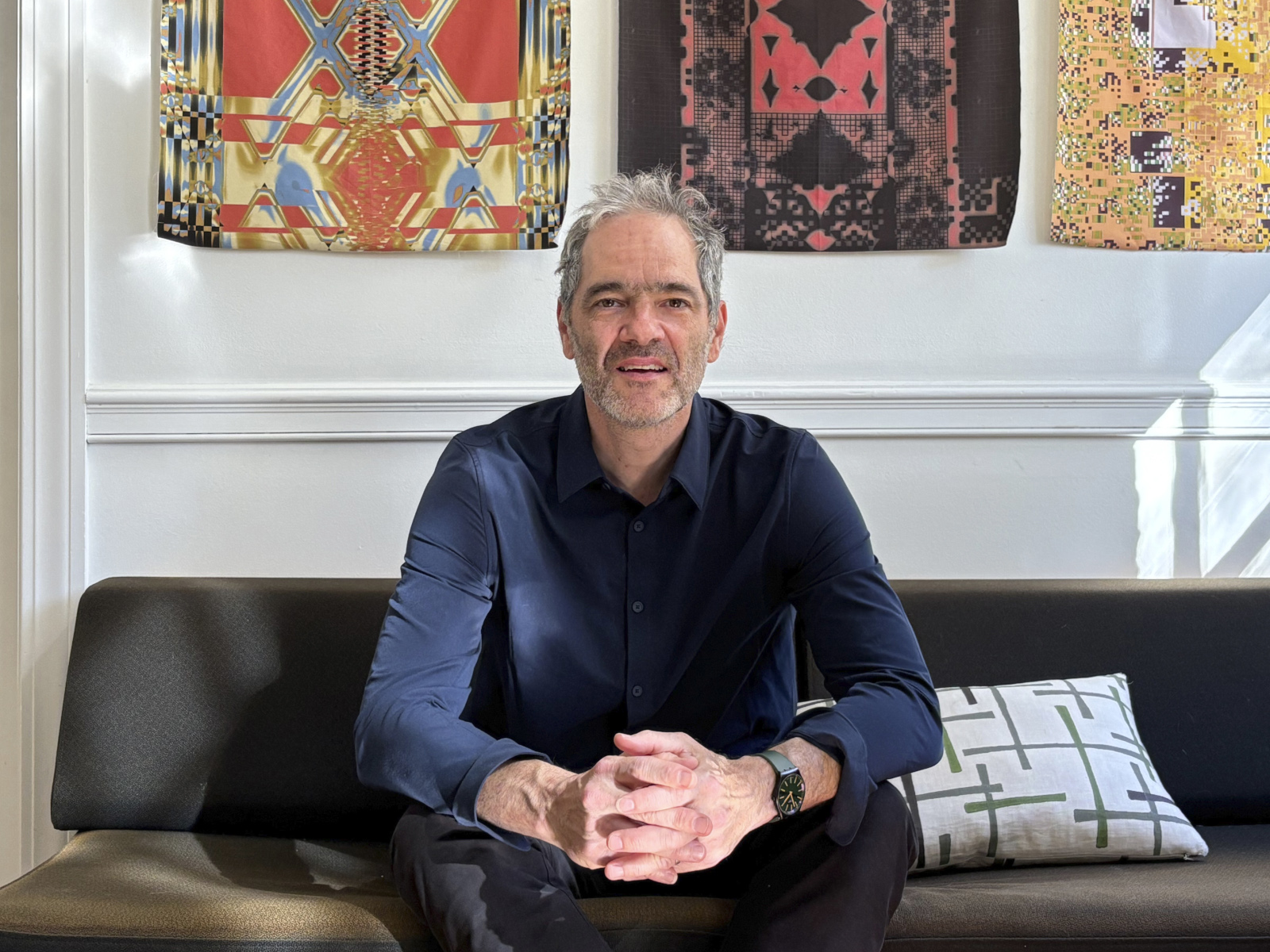 Teaching through the Lens of the Tool – with Prof. John Caserta
Teaching through the Lens of the Tool – with Prof. John Caserta
On a hot day in the summer of 2024, my friend Cem Eskinazi brought a stack of books to our […]
 DJ_Dave – Raving with Code
DJ_Dave – Raving with Code
Sarah, also known as DJ_Dave, writes code to produce rave music. You might say, “Oh, I know that stuff: Algorave! […]
 The Future of Processing – with Raphaël and Stef
The Future of Processing – with Raphaël and Stef
I have some really good news: Processing is currently undergoing rapid development! Processing community lead Raphaël de Courville and primary […]
 Deconstruction / Reconstruction – Creative Coding with Prof. Stig Møller Hansen
Deconstruction / Reconstruction – Creative Coding with Prof. Stig Møller Hansen
I am more than excited to share this session with Prof. Stig Møller Hansen with you today, whom I would […]
 Kris de Decker on Low Technology
Kris de Decker on Low Technology
In the two years I lived in Barcelona, one person in particular fascinated and inspired me. His name is Kris […]
 Nico Landrieux on the Intersection of Ballet and Code
Nico Landrieux on the Intersection of Ballet and Code
I am totally thrilled to introduce Nicolas Landrieux to you today. We met a few years ago at one of […]
 Raquel Meyers – The Tool is the Message
Raquel Meyers – The Tool is the Message
Let’s begin here: A myriad of new technologies is accelerating our world at a breathtaking pace. I’m not interested in […]
 Kit Kuksenok on p5.js 2.0
Kit Kuksenok on p5.js 2.0
In 2025, both Processing and p5.js made major leaps forward in the development. I had the great opportunity to speak […]
